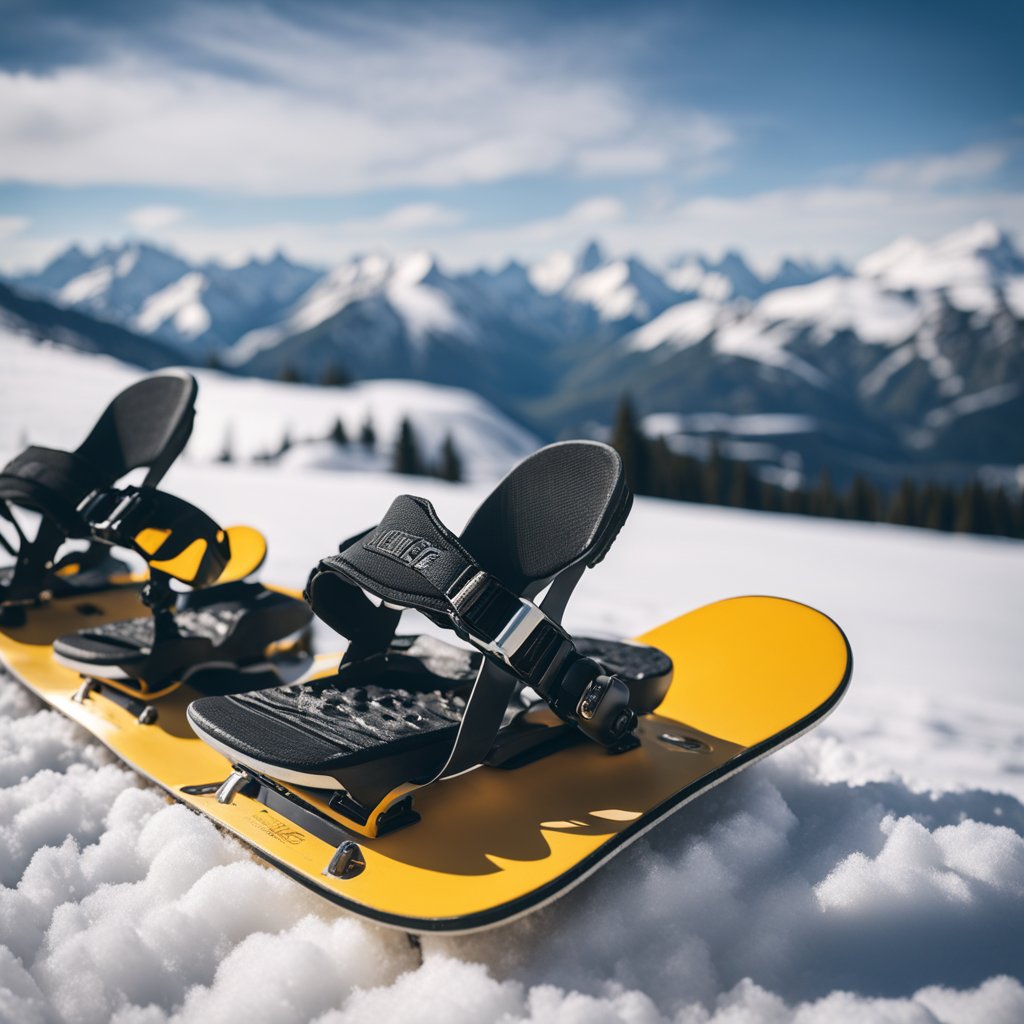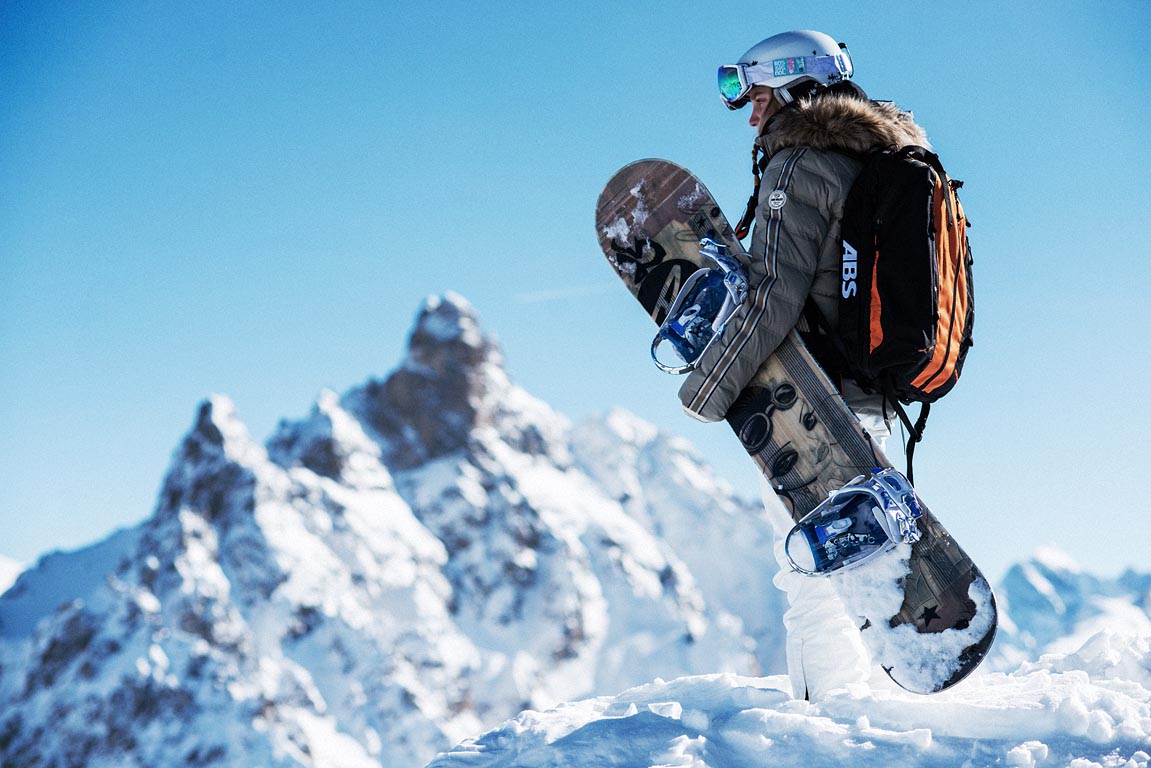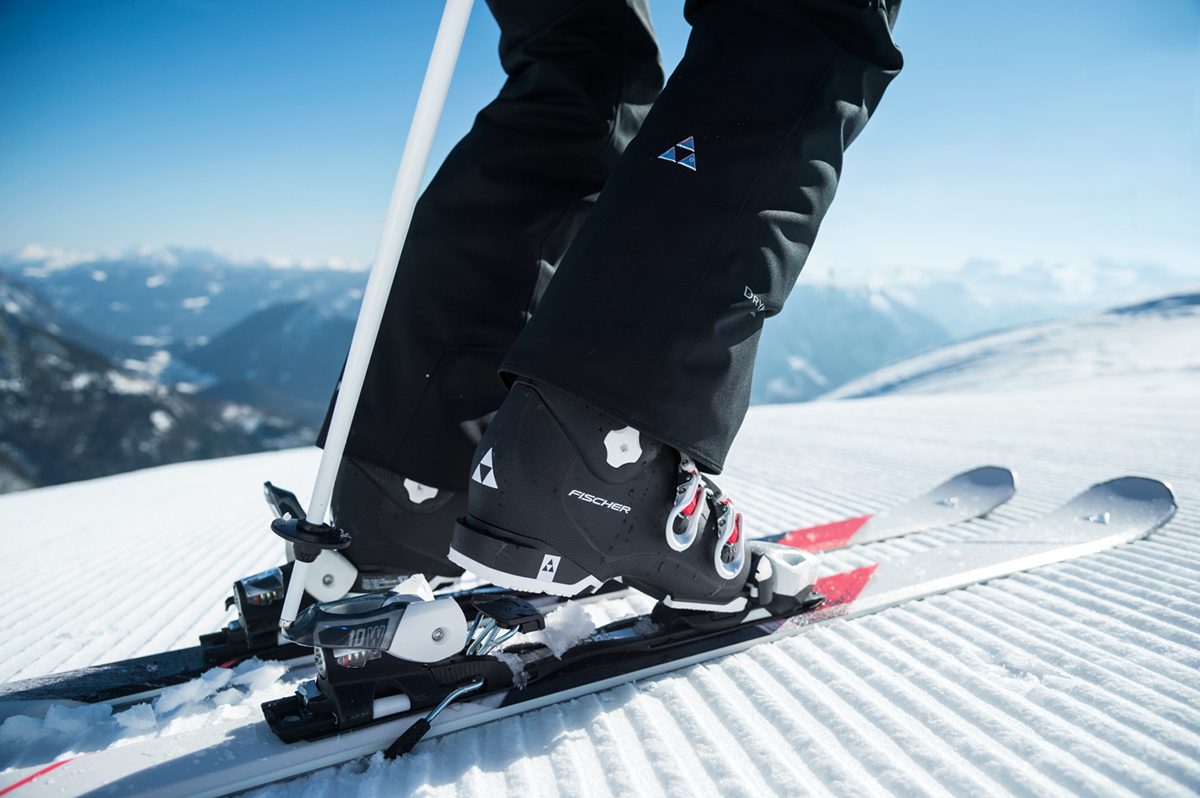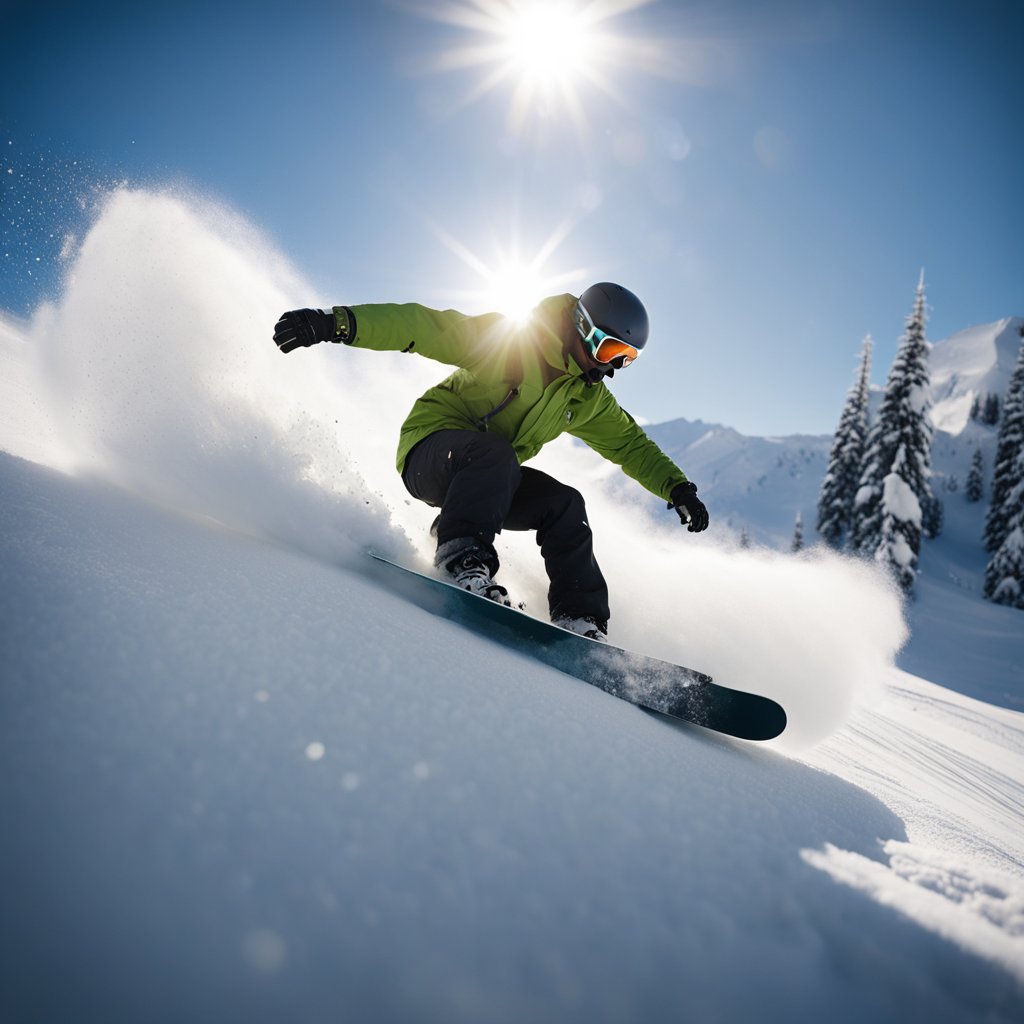How to Unlock Snowboard Bindings: A Comprehensive Guide

Picture yourself gliding down a snow-covered mountain, the crisp air rushing past your face as you navigate the slopes with ease. Your snowboard becomes an extension of your body, responding to your every move. But have you ever wondered how to unlock the full potential of your snowboard bindings, ensuring optimal performance and a customized ride?
In this comprehensive guide, we will take you on a journey of discovery, exploring the features, adjustments, and optimization techniques that will revolutionize your snowboarding experience. Whether you’re a seasoned pro or a newbie to the sport, this guide is packed with valuable insights and practical tips to help you master your snowboard bindings.
Throughout this blog, you’ll learn:
– The different features of snowboard bindings and how they impact performance.
– Step-by-step instructions on adjusting your bindings to achieve the perfect fit.
– Tips and tricks for optimizing energy transfer and enhancing your ride.
– Techniques for customizing your bindings to suit your riding style and preferences.
Get ready to unlock the secrets to your snowboard’s full potential and elevate your snowboarding game to new heights. It’s time to hit the slopes with confidence and embark on an unforgettable snowboarding adventure.
Introduction to Snowboard Bindings
Snowboard bindings play a crucial role in your riding experience, providing the essential connection between you and your board. Understanding their importance and learning how to unlock their full potential can greatly enhance your performance on the slopes.
Properly adjusted and optimized bindings allow for better control, responsiveness, and comfort, maximizing your enjoyment and safety. By unlocking the features and making precise adjustments, you can achieve a more personalized and customized riding experience.
When it comes to snowboard bindings, unlocking refers to utilizing their full range of features and adjusting them to suit your preferences and needs. This not only improves your overall performance but also enhances your comfort and reduces the risk of injuries.
Impact of Snowboard Bindings on Performance
Snowboard bindings are responsible for transmitting your physical movements and energy to the board, making them a critical component of your setup. They ensure efficient power transfer, allowing you to carve turns, initiate tricks, and maintain control over varying terrain.
By securely fastening your boots to the board, bindings provide stability and responsiveness, enabling you to make precise movements and execute maneuvers with ease. They help you maintain a strong connection with the board, giving you the confidence to push your limits and explore new maneuvers.
Benefits of Unlocking and Adjusting Bindings
Unlocking and adjusting your snowboard bindings offer several key benefits. Firstly, it allows you to achieve a comfortable and secure fit, reducing the chances of foot fatigue and discomfort during extended periods on the slopes.
Secondly, adjusting your bindings enables you to customize your setup based on your riding style, skill level, and personal preferences. Fine-tuning elements such as binding angles, strap tension, and forward lean can significantly influence your performance and overall riding experience.
Lastly, unlocking and adjusting your bindings ensures optimal energy transfer from your body to the board, maximizing your control and responsiveness. This enhances your ability to manipulate the board, execute precise maneuvers, and adapt to different snow conditions.
In the following sections, we will delve deeper into the process of unlocking and adjusting snowboard bindings. By understanding the features, making precise adjustments, and optimizing their setup, you’ll be well on your way to unlocking the full potential of your snowboard bindings and enjoying a personalized and high-performance ride on the slopes.
Finding Your Natural Riding Stance
When it comes to snowboarding, finding your natural riding stance is crucial for a comfortable and enjoyable experience on the slopes. Your stance refers to the position of your feet on the snowboard, and it can greatly affect your balance, control, and overall performance. In this section, we will guide you through the process of determining your natural riding stance and provide recommendations based on personal preference and riding style.
Step 1: Goofy or Regular?
The first step is to determine whether you are a “goofy” or “regular” rider. These terms refer to the position of your dominant foot on the snowboard. A goofy rider has their right foot as the lead foot, while a regular rider has their left foot as the lead foot.
To figure out your natural stance, try this simple test:
1. Stand with your feet together.
2. Have someone gently push you from behind.
3. Pay attention to which foot instinctively goes forward to catch your balance.
If your left foot steps forward, you are a regular rider. If your right foot steps forward, you are a goofy rider. This instinctual foot placement will help determine your natural riding stance.
Step 2: Personal Preference and Riding Style
Once you’ve determined your natural riding stance, the next step is to consider your personal preference and riding style. Finding the perfect stance width and angles can greatly impact your performance on the board.
Stance Width: This refers to the distance between your bindings. The ideal stance width depends on your height, weight, and preference. A wider stance provides more stability and control, while a narrower stance allows for quicker turns and maneuvers. Experiment with different widths to find what feels most comfortable for you.
Binding Angles: The angles at which your bindings are set can significantly influence your riding style. There are two main angles to consider:
– Front Binding: This is the angle of the front binding, which determines the direction your board will naturally point. A common starting point is to set the front binding at 15 degrees.
– Back Binding: The angle of the back binding affects your ability to maneuver and transition between edges. A common starting point for the back binding is around 0 degrees or a slight negative angle.
Remember, these settings are not set in stone. It’s important to experiment with different stance widths and binding angles to find the configuration that feels most comfortable and suits your riding style.
Recommendations
– If you’re a beginner, it’s generally recommended to start with a shoulder-width stance for stability and control.
– As you gain experience, you can experiment with wider or narrower stance widths based on your preference.
– If you’re primarily focused on carving and groomed runs, a slightly wider stance with more forward binding angles can provide stability and precision.
– For riders who enjoy park and freestyle riding, a slightly narrower stance with more symmetrical binding angles can offer easier switch riding and more maneuverability.
Remember, finding your natural riding stance is not a one-size-fits-all approach. It’s about discovering what feels most comfortable and allows you to perform at your best. Take the time to experiment and make adjustments until you find your optimal stance for an incredible snowboarding experience.
Understanding Snowboard Binding Features
When it comes to snowboard bindings, understanding their features is crucial for optimizing your performance on the slopes. Let’s explore the different components and functionalities that make up these essential pieces of equipment.
Four-Strap System
The classic four-strap system is a common feature found in snowboard bindings. It consists of two ankle straps, one toe strap, and a highback strap. The ankle straps secure your feet to the bindings, providing stability and control. Meanwhile, the toe strap ensures that your boots stay snugly in place, enhancing responsiveness.
Binding Placement
The placement of bindings on your snowboard plays a significant role in dictating your riding experience. The mounting system typically has multiple options for adjusting the position of your bindings. Finding the right placement is essential for achieving the desired balance and maneuverability. Experimenting with different positions can help you find the sweet spot for your riding style and preferences.
Purpose of Each Feature
Each feature of snowboard bindings serves a specific purpose to enhance your performance. The ankle straps offer support and stability, giving you precise control over your board. The highback strap connects to the back of your boot, providing additional support and control as you carve through the snow. The toe strap ensures that your boots stay securely in place, minimizing slippage and improving energy transfer.
Contribution to Optimal Performance
Understanding how each feature contributes to optimal performance is key to unlocking the full potential of your snowboard bindings. The four-strap system provides the necessary support and responsiveness, allowing you to execute precise movements on the slopes. Proper binding placement ensures the right balance and control, allowing you to confidently tackle various terrains. By harnessing the functionality of each feature, you can elevate your riding experience to new heights.
In conclusion, familiarizing yourself with the different features of snowboard bindings is essential for maximizing your performance on the slopes. The four-strap system, binding placement, and the purpose of each feature all play a significant role in your overall riding experience. Understanding how these elements contribute to optimal performance will empower you to make informed choices and tailor your setup to suit your individual needs and riding style.
Adjusting Snowboard Bindings
Adjusting snowboard bindings is a crucial step in optimizing your riding experience. A customized fit ensures comfort, control, and the ability to maximize the performance of your snowboard. In this section, we will provide you with detailed instructions on how to adjust your snowboard bindings, covering important topics such as size adjustments, toe strap placement, and forward lean adjustment. By following these guidelines and incorporating tips from professional instructors and experienced riders, you can fine-tune your bindings for the perfect ride.
Size Adjustments
Proper sizing of your snowboard bindings is essential for stability and control. Start by finding the reference stance, which is the centered setup recommended by the snowboard manufacturer. This is usually indicated by two reference marker holes on the board, located between the bindings. Align the center of both bindings with these holes to achieve the optimal stance width.
To adjust the toe-to-heel position, simply slide the bindings forward or backward along the insert holes until your boots are centered over the board. For most riders, a centered stance provides the best balance and maneuverability. However, it’s important to experiment and find a setup that feels comfortable to you.
Toe Strap Placement
The toe strap plays a crucial role in securing your boots to the bindings. Start by aligning the strap with the toe of your boot and adjusting its length accordingly. The strap should be snug but not overly tight, allowing for natural movement while providing sufficient support.
Position the toe strap across the top of your boot, making sure it covers the toe area securely. Double-check that there are no pressure points or discomfort caused by the strap. Adjust the length if necessary to achieve a comfortable and secure fit.
Forward Lean Adjustment
Forward lean refers to the angle at which your highbacks are set. It affects your riding style, responsiveness, and energy transfer. Most bindings allow for forward lean adjustments, which can be done easily with the use of a tool, often provided with the bindings.
To adjust the forward lean, locate the adjustment slider on the back of the highbacks. Loosen the screws or lever to release the highback, then tilt it forward or backward to your desired angle. A more upright position is suitable for freestyle riding, providing greater flexibility and maneuverability. On the other hand, a more forward lean is preferred for freeriding and aggressive carving, offering increased response and power.
Tips and Common Practices
Here are some additional tips and common practices to keep in mind when adjusting your snowboard bindings:
1. Use a pocket tool or the necessary tool provided with your bindings to make adjustments on the go.
2. Avoid over-tightening the ratchet buckle, as it can create unnecessary pressure points and discomfort. Straps should be snug but not excessively tight.
3. Double-check that the four-hole disk is securely fastened to the board. Loose disks can affect the performance and safety of your bindings.
4. When adjusting binding angles, consider your riding style, comfort, and skill level. Find a suitable balance that allows for optimal performance and enjoyment.
Remember, adjusting snowboard bindings is not a one-time task. As you gain experience and explore different terrain and riding conditions, you may need to make minor tweaks and modifications to ensure your bindings cater to your evolving needs. Take the time to experiment, listen to your body, and always use your best judgment when making adjustments.
“Finding the perfect fit and adjustments for your snowboard bindings is key to unlocking the full potential of your ride.” – Kent Bry, Director of Adventure Ski, San Diego
By following these step-by-step instructions and incorporating the tips shared in this section, you can fine-tune your snowboard bindings and enhance your riding experience. Remember to always prioritize comfort, control, and safety when making adjustments.
Tips for Optimal Performance
To truly unlock the full potential of your snowboard bindings, it’s essential to understand how certain factors can greatly impact your performance on the slopes. Here are some valuable tips and techniques to maximize the performance of your snowboard bindings:
1. Energy Transfer: The Secret to Powerful Rides
Efficient energy transfer is crucial for a responsive and powerful ride. When strapping in, make sure your boot is snugly secured to the binding to minimize energy loss. The more direct the connection between your boot and the board, the more efficient the energy transfer will be. This will allow you to maintain control and carve with precision.
2. Binding Angles: Find Your Sweet Spot
Experimenting with different binding angles can make a significant difference in your ride quality. Adjusting the angle of your bindings can affect your stability, turn initiation, and overall comfort. While there is no one-size-fits-all approach, a good starting point is to align your bindings with the edges of your snowboard, creating a centered setup. From there, you can fine-tune the angles based on personal preference and riding style.
3. Weight Distribution: Balance is Key
Proper weight distribution is essential for maintaining control and balance on your snowboard. Try to evenly distribute your weight between both feet to achieve stability and responsiveness. Be mindful of your body positioning and avoid leaning too far forward or backward, as this can disrupt your balance and affect your ability to initiate turns.
4. Insights from Professionals and Experienced Riders
Seeking advice from professional instructors and experienced riders can provide invaluable insights for optimizing your snowboard binding performance. They can offer tips specific to your riding style and help you troubleshoot any issues you may encounter. Don’t hesitate to tap into the knowledge of those who have honed their skills over years of experience.
Remember, achieving optimal performance with your snowboard bindings is a continuous process of experimentation and fine-tuning. These tips will serve as a solid foundation for enhancing your ride quality and unlocking the full potential of your snowboarding experience.
> “Proper energy transfer and weight distribution are key in getting the most out of your snowboard bindings. Experiment with different binding angles to find your sweet spot.” – Kent Bry, Director of Adventure Ski at San Diego State University
Troubleshooting and Maintenance
Snowboard bindings, like any other piece of equipment, may encounter issues that can affect your riding experience. In this section, we will address common problems, provide helpful troubleshooting tips, and guide you on proper maintenance and replacement of bindings.
Loose or Misaligned Bindings
Loose or misaligned bindings can cause instability and affect your control on the slopes. To fix this issue, follow these steps:
1. Check the mounting screws: Ensure that all screws are tightened properly. If any are loose, use a screwdriver to tighten them.
2. Realign the bindings: If your bindings feel misaligned, loosen the screws slightly and adjust them to align with your snowboard’s reference stance or your personal preference.
Painful Pressure Points
If you experience uncomfortable pressure points while riding, try these remedies:
1. Readjust the straps: Loosen or tighten the straps to achieve a more comfortable fit.
2. Pad the pressure points: Use foam or padding to alleviate pressure on sensitive areas such as the ankles or arches.
Strapping In and Out Difficulties
If you struggle with strapping in or out of your bindings, consider the following solutions:
1. Review strap positioning: Ensure that the ladder straps are properly threaded through the bindings and the buckles are properly engaged.
2. Check the ratchet buckles: Clean them regularly and replace any worn-out or damaged buckles.
Maintenance and Replacement
To prolong the lifespan and performance of your bindings, follow these maintenance tips:
1. Clean and inspect regularly: Remove any dirt or debris and inspect the bindings for any signs of wear and tear.
2. Replace worn-out parts: If any components of your bindings, such as straps or buckles, are damaged or worn out, replace them with compatible parts.
By troubleshooting common issues and practicing regular maintenance, you can ensure your snowboard bindings stay in optimal condition and provide maximum performance on the slopes.
> “Regular maintenance and timely troubleshooting are essential to keep your snowboard bindings in top shape.” – Kent Bry, Director of Adventure Ski
Conclusion
In conclusion, unlocking and adjusting your snowboard bindings is crucial for achieving a personalized and high-performance riding experience. Throughout this comprehensive guide, we have explored various aspects of snowboard bindings, from finding your natural riding stance to understanding different features and making precise adjustments.
By determining your natural riding stance, whether it’s regular or goofy, you can select a stance that aligns with your personal preference and riding style. This ensures maximum comfort and control on the slopes.
We have also discussed the importance of understanding the features of snowboard bindings, such as the classic four-strap system and the placement of bindings on the board. These features contribute to the overall performance and functionality of your bindings.
Additionally, we have provided detailed instructions on how to adjust your snowboard bindings for a customized fit. By making size adjustments, toe strap placements, and fine-tuning the forward lean, you can achieve optimal comfort and control while riding.
To maximize the performance of your snowboard bindings, tips and techniques such as energy transfer, binding angles, and weight distribution were shared. These insights, derived from professional instructors and experienced riders, can greatly enhance your riding skills.
Lastly, we addressed common issues and provided troubleshooting tips for snowboard bindings. Regular maintenance and replacing bindings when needed ensure their longevity and safety.
In summary, by unlocking and adjusting your snowboard bindings, you can unleash their full potential and enjoy a customized ride on the slopes. Take the time to understand the features, make precise adjustments, and follow the tips for optimal performance. Get ready to elevate your snowboarding experience and conquer the mountains with confidence!
FAQs
Here are answers to some frequently asked questions about snowboard bindings:
Q: How do I determine the best binding angles for me?
A: Finding the best binding angles is a matter of personal preference and riding style. Experiment with different angles to see what feels most comfortable and provides optimal performance. A good starting point is to set your front binding at a 15-degree angle and your back binding at a 0-degree angle, creating a neutral stance. From there, you can make small adjustments based on your comfort and the type of riding you’ll be doing. Remember, there is no one-size-fits-all answer, so trust your instincts and find what works best for you.
Q: What tools do I need for adjusting snowboard bindings?
A: To adjust snowboard bindings, you’ll need a pocket tool or a set of screwdrivers with the appropriate sizes for the binding screws. Some bindings may have additional adjustment features that require specific tools provided by the manufacturer. It’s always a good idea to carry a tool kit with you on the mountain in case you need to make on-hill adjustments.
Q: How often should I replace my snowboard bindings?
A: The lifespan of snowboard bindings can vary depending on factors such as frequency of use, riding style, and maintenance. As a general guideline, bindings should be replaced when they show significant signs of wear and tear, such as broken parts, loose screws, or decreased functionality. It’s recommended to inspect your bindings regularly and replace them when necessary for the safety and performance of your snowboarding experience.
Q: Can I use the same bindings for different snowboard boots?
A: Yes, bindings are typically adjustable to accommodate different boot sizes. Most bindings have a sliding mechanism that allows you to adjust the size to fit various boot lengths. However, it’s important to ensure that your bindings are compatible with your specific boot model and size. Always refer to the manufacturer’s guidelines and make sure your boots are securely fastened to the bindings for a safe and comfortable ride.
Remember, these FAQs provide general information, but it’s always a good idea to consult with professionals or experienced riders for specific recommendations tailored to your individual needs.





